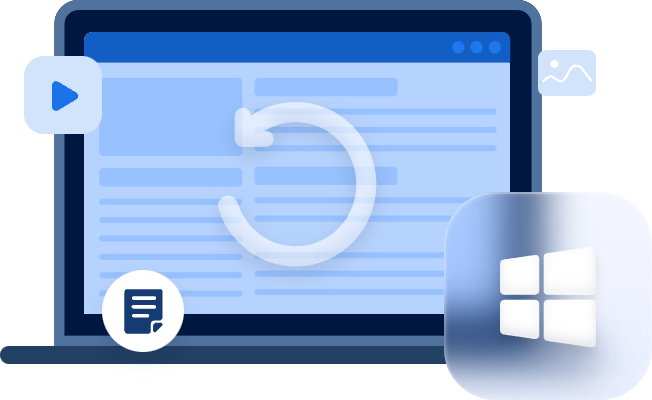Troubleshooting "We Couldn't Install Some Updates Because the PC Was Turned Off"
This comprehensive guide delves into specific step-by-step solutions for troubleshooting Windows update installation problems, including an in-depth exploration of MyRecover for recovery.
Windows updates are critical for the optimal functioning of your PC, enhancing security and performance. However, encountering issues during the installation process, especially the error message "we couldn't install some updates because the PC was turned off," can be both perplexing and frustrating. In this comprehensive guide, we will delve into detailed methods to troubleshoot common Windows update installation problems.
Method 1: Check Power Settings
Ensure Proper Power Connection
Plug in Your PC: Confirm that your PC is connected to a power source. Updates may fail if your device is running on battery power.
Power Supply Stability: Ensure the stability of your power supply. Sudden power interruptions can lead to installation failures.
Adjust Sleep Settings
Navigate to Power & Sleep Settings: Open the Settings menu and go to "System."
Access Power & Sleep Settings: Click on "Power & Sleep" to access sleep preferences.
Modify Sleep Preferences: Adjust sleep settings to prevent the PC from turning off during updates. Set longer sleep intervals to accommodate the update process.
Method 2: Restart Your PC
A seemingly simple solution, restarting your PC can often resolve issues related to updates. Follow these steps for an effective restart:
Close All Applications: Ensure all open applications are closed to avoid potential conflicts during the restart.
Click on Start: Open the Start menu and click on the power icon.
Select Restart: Choose the "Restart" option to initiate the restart process.
Method 3: Windows Update Troubleshooter
Run Built-in Troubleshooter
The Windows Update Troubleshooter is a built-in tool designed to identify and fix update-related problems. Follow these detailed steps to run the troubleshooter:
Open Settings:
Click on the Start menu.
Select "Settings" (gear icon).
Navigate to Update & Security:
In the Settings menu, choose "Update & Security."
Access Troubleshoot Settings:
Click on "Troubleshoot" from the left sidebar.
Run Windows Update Troubleshooter:
Under "Get up and running," select "Windows Update."
Click on "Run the troubleshooter" and follow on-screen instructions.
Method 4: Check Internet Connection
A stable internet connection is crucial for successful updates. Follow these steps to ensure your PC is connected to a reliable network:
Check Network Connection:
Ensure your device is connected to a stable and reliable network.
Restart Your Router:
If the issue persists, consider restarting your router to establish a fresh connection.
Method 5: Use MyRecover for Recovery
About MyRecover
MyRecover is a robust tool designed to recover and restore your system after update failures. Explore its features and follow these step-by-step recovery procedures:
Download and Install MyRecover:
Visit the official MyRecover website and download the application.
Follow on-screen instructions to install the tool on your PC.
Launch MyRecover:
Once installed, launch MyRecover from your desktop or Start menu.
Select the "Recovery" Option:
In the MyRecover interface, choose the "Recovery" option.
Choose Recovery Point or Select Files:
Select either a specific recovery point or choose individual files for recovery.
Follow On-Screen Instructions:
Follow the on-screen instructions provided by MyRecover to initiate and complete the recovery process.
Conclusion
Troubleshooting Windows update installation problems requires a systematic and detailed approach. By following the step-by-step methods outlined in this guide, you can overcome issues and ensure a smooth updating process. Additionally, MyRecover serves as a reliable solution for recovery in case of update failures, offering detailed recovery procedures for a seamless experience.
FAQs
Q: How frequently should I check for Windows updates?
A: It is recommended to check for updates regularly, ideally once a week, to ensure your PC remains secure and up-to-date.
Q: Can I use MyRecover to recover specific files affected by Windows updates?
A: Yes, MyRecover allows selective file recovery, making it suitable for restoring files impacted by update failures.
Q: Are there any risks associated with modifying power settings during updates?
A: While adjusting power settings, ensure your PC remains connected to a stable power source to avoid interruptions.
Q: What should I do if the built-in troubleshooter fails to fix my update issues?
A: If the Windows Update Troubleshooter doesn't resolve the problem, consider reaching out to Microsoft support for further assistance.
Q: Is MyRecover compatible with all Windows versions?
A: Yes, MyRecover is designed to be compatible with various Windows versions, providing recovery solutions across different systems.


